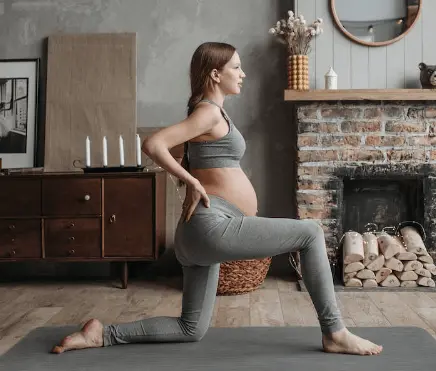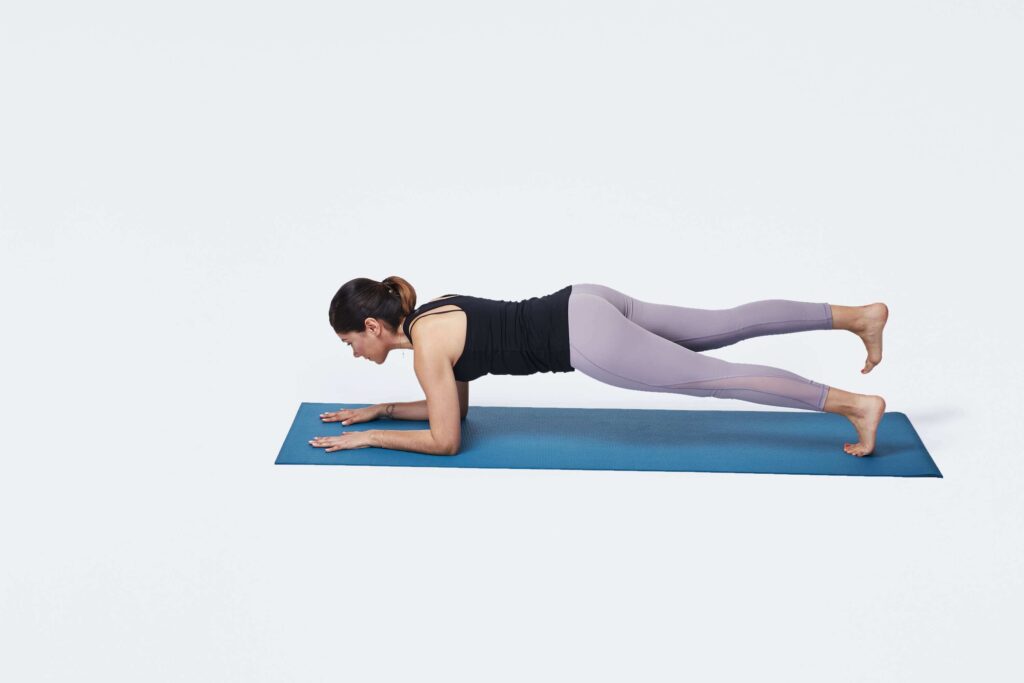Having a baby takes a lot out of you, both physically and emotionally. But With the right exercises and routines, you can recover quickly and build up your strength and energy to meet the demands of your growing family. After giving birth, your body will be different than before, so you’ll want to make sure that you’re exercising in ways that are appropriate for your body type and fitness goals
If you have recently given birth, you may be thinking, How long do I have to wait before I can start exercising again? While this varies widely from woman to woman and pregnancy to pregnancy, it is safe to say that most doctors will recommend waiting anywhere from 6 weeks to 3 months before returning to your previous level of physical activity.
Postpartum exercises:
After having a baby, it can be hard to get back into shape. There are many exercises that you can do to help strengthen your core and lower body, but sometimes it can be hard to find time in your day. That’s why we sat down to list some postpartum exercises that will help you feel great from the inside out.

You don’t need any equipment to complete these exercises, so all you need is 15 minutes each day! These exercises target different areas of the body including abs, thighs, butt, hips, and arms.
Importance of post-pregnancy workout
It is a common misconception that post-pregnancy exercise is not required. But, it is important to know that post-pregnancy exercises can help you strengthen your core and pelvic floor muscles, which will help get you back on track after giving birth.
You should also know that doing these exercises can help reduce or prevent any complications or health risks like urinary incontinence or stress incontinence. There are various post-pregnancy workout routines available, but before starting a new routine make sure to consult your doctor first!
When starting a post-pregnancy workout regimen, make sure to do some light cardio activity such as walking or jogging at an easy pace. It is also important that women understand their limitations in the early stages of their recovery from childbirth.
They need to be aware of how much they can actually lift during those early weeks because lifting too much weight can put pressure on their uterus and cause pain.
Pelvic floor exercises
If you are a new mom, you may have heard about pelvic floor exercises. This exercise will help with bowel issues, and pain from childbirth. They also help restore your vagina to its pre-birth appearance, which is a major problem for women nowadays.
These exercises take only five minutes per day and are easy to do while you’re sitting on the toilet or standing in front of a mirror. The Kegelmaster is a device used in pelvic exercises, which comes with a small plastic device that is inserted into the vagina during pelvic floor exercises.

Pelvic muscle contractions move the device back and forth against the vaginal wall, which strengthens your muscles naturally.
The other way to work out your pelvic floor muscles is through Kegels. For this, tighten your pelvic muscles by pretending you’re trying to stop urinating. Then release. Do this 10 times in a row twice a day.
Another type of postpartum exercise is core stabilization. Core stabilization exercises include yoga poses such as downward dogs or planks, as well as other weightlifting activities such as squats and lunges.
Diaphragmatic breathing
- Focus on one specific thing in front of you.
- Breathe deeply through your nose, filling up the lower part of your lungs first.
- Exhale slowly and completely until your diaphragm relaxes. Your stomach should go out when you exhale and then sink back in when you inhale again.
- Repeat this breathing pattern as often as needed to reduce stress levels and feel calmer.
- After a few minutes of practicing deep breathing, move on to exercises that can be done from a seated position such as pelvic tilts or leg extensions.
Walking
A great and easiest way to get back in shape is by taking a walk. You can do it anytime and anywhere. You may have to modify your walking routine, but you can still get a good workout. For example, if you’re not used to carrying a baby or other children, you might want to start with an easier route.

We suggest try taking your baby out while they’re napping so that they can nap while being walked around outside or inside of your home. Another option is to go out on walks without the kids. Start small with 10-15 minutes at a time and work your way up to 30 minutes.
Walking also helps alleviate stress, which new moms are often hit hard with due to lack of sleep and worry about caring for their newborns.
Happy baby yoga poses
The happy baby yoga pose is a great way to stretch your back, hips, and abs. To do the happy baby yoga pose, lie on your back with your knees bent and feet flat on the ground. Bring one foot as close as you can to your butt.
While keeping both arms at your sides, bring that same knee towards your chest by straightening the other leg out in front of you. At the same time, bring that arm over to that knee and grab it with both hands. Keeping your head resting on the floor, use your lower abs to pull yourself closer to your legs.
If this feels good and comfortable, hold for 15 seconds before switching to the other side. Happy baby yoga poses can also be done without bringing an arm over to help you stretch more deeply into the lower spine.
Swiss ball bird dog holds
This works on your core muscles, obliques, and back. Begin by lying on the ground with a Swiss ball under your belly. Place your hands on the floor in front of you for support as you push up into a plank position. Bring one leg up over the ball and place it down on the other side in a bird dog position.
Hold for 10 seconds before switching sides. Repeat this exercise 10 times on each side. It’s important to maintain good posture throughout the exercise. If the exercise feels too challenging, start by lowering your chest to the ball then slowly raise yourself off the ground. For more of a challenge, lower your knees to the floor instead of going straight into a plank position.
Cat-Cow in tabletop
Cat-Cow is a great way to strengthen your back and pelvic floor in preparation for birth. The sequence is as follows:
- First, start in a tabletop position.
- Then arch your back like a cat and round your back like a cow. This should be done at least 10 times on each side.
- Cat-Cow can also be done lying on your side while holding onto the opposite knee, which is helpful if you have back pain during pregnancy or after birth.
- It’s important to find a comfortable position that feels good for you. Make sure you don’t push too hard when doing any of these exercises; you’ll need your breath!
Swiss ball glute bridge
The glute bridge is a great exercise for the butt and lower back muscles. To do this exercise, lie on your back on the floor with your feet flat and your hips raised. Place a Swiss ball under your hips, positioning it so that you have even weight distribution on both the ball and the floor.
From this position, engage your core and raise your hips off the floor until you are in bridge pose. Hold this pose for five seconds then lower yourself down slowly. Repeat the same 10 times.
Postpartum planks
Your postpartum planks should be done every day, even if it is just a few seconds. The goal is consistency in completing them, not the number of reps.
Start in a push-up position with your hands on the ground and your feet spread apart so that your weight is evenly distributed. Lower yourself onto your elbows and then lower yourself onto your forearms. This will be your starting position for the next few minutes.

Keep your head up, engage your core and hold this plank as long as you can before lowering down again into the next pose. Hold each pose for 30 seconds before moving to the next one. Repeat this process until you have completed five poses in total!
Side plank leg lifts
Start by lying on your right side, propping yourself up onto your left elbow, and placing your right hand below your bottom rib. Next, extend the top leg out in front of you and begin lifting it up as high as it can go before slowly lowering it back down toward the ground.
Repeat this for five repetitions on each side. Aim to do these three times a week when not performing any other core exercises. Side plank leg lifts work to increase balance, range of motion, and strength in the abdominal muscles.
Takeaway!
As you work your way through the first few weeks of motherhood, remember that it’s never too early to start thinking about how you’ll be able to get back into shape. Exercise is a great way for new moms and dads alike.
And there are many exercises that can be done from the comfort of your home with minimal equipment. Remember to consult your physician before starting any postpartum fitness plan. The three most effective ones discussed in this blog post are pelvic tilts, squats, and walking lunges.
